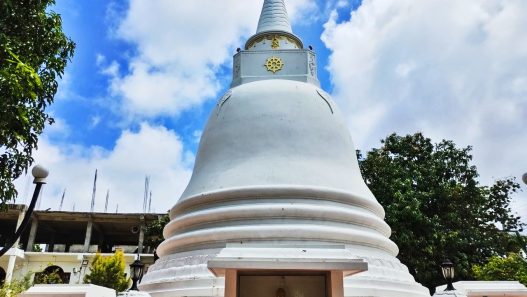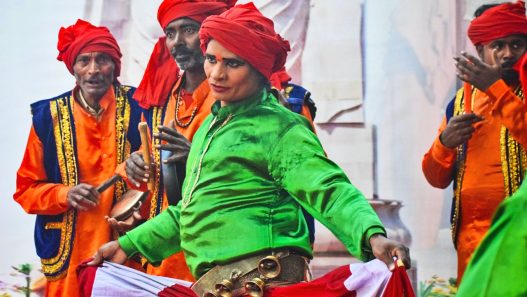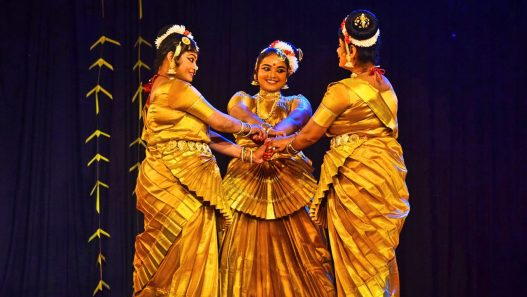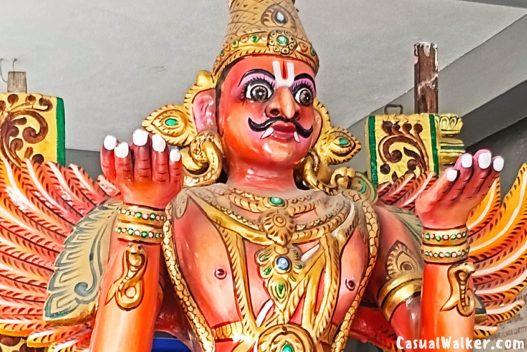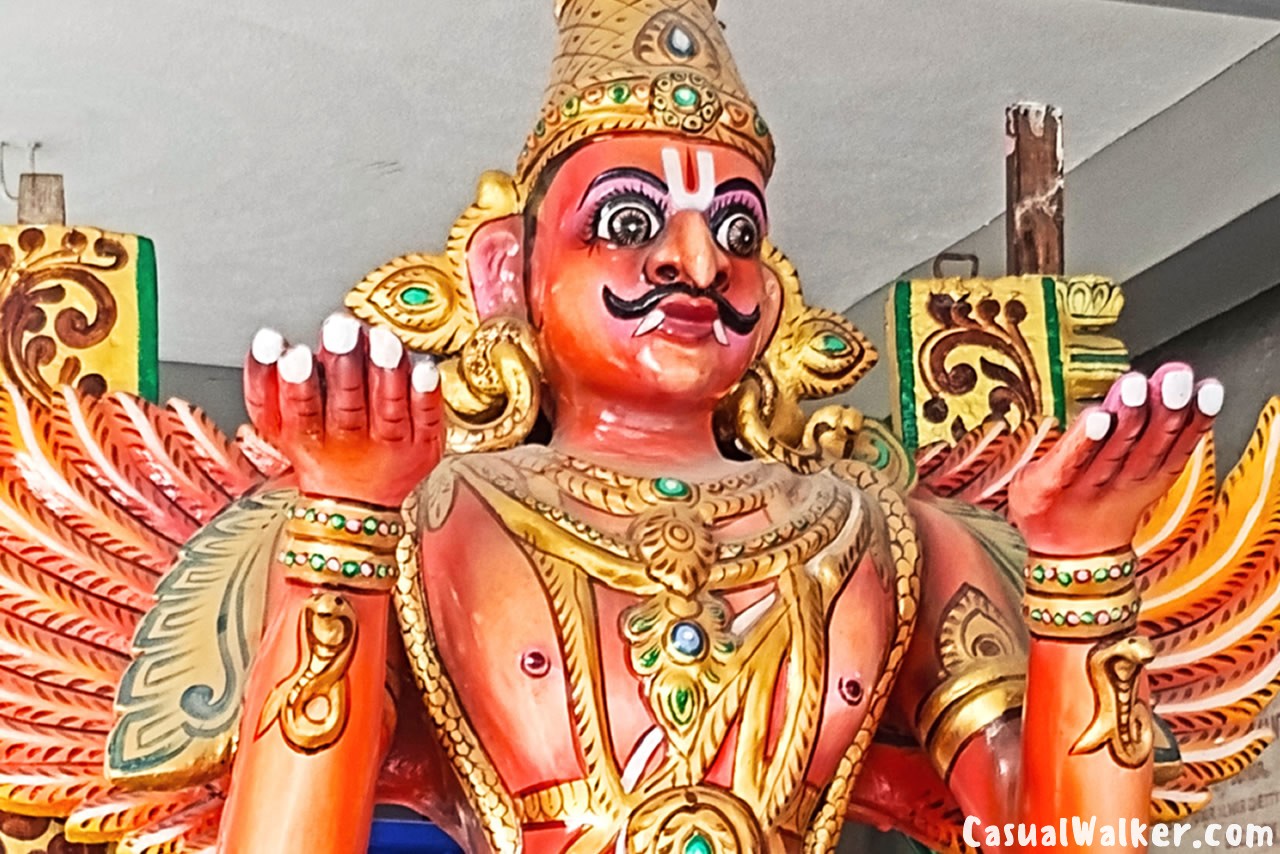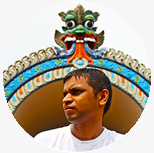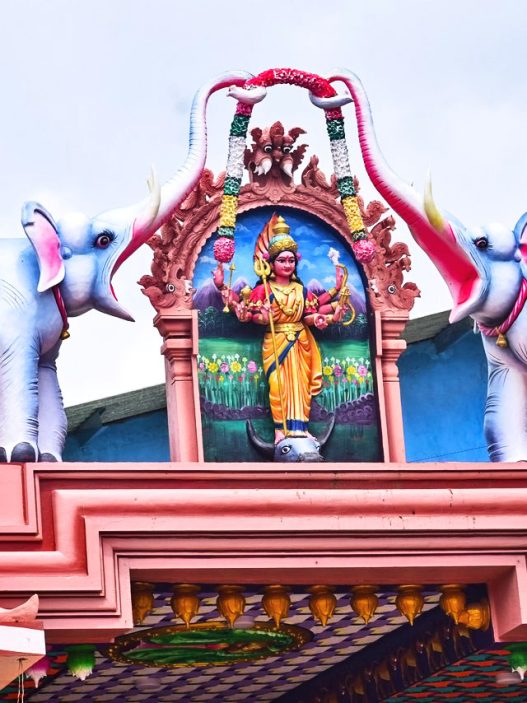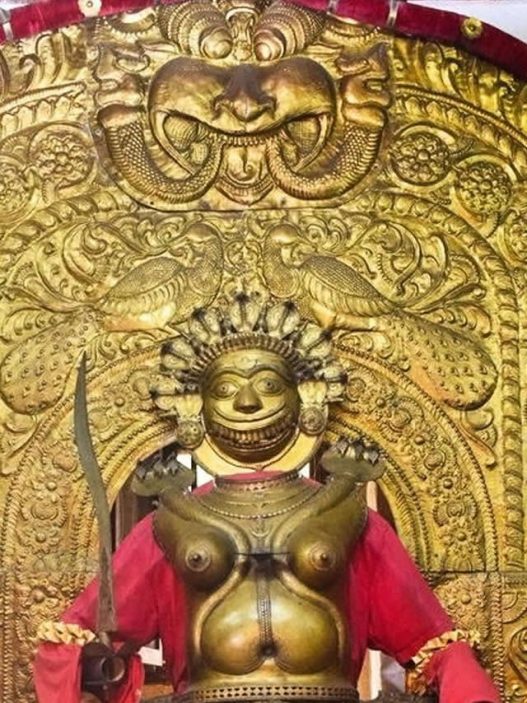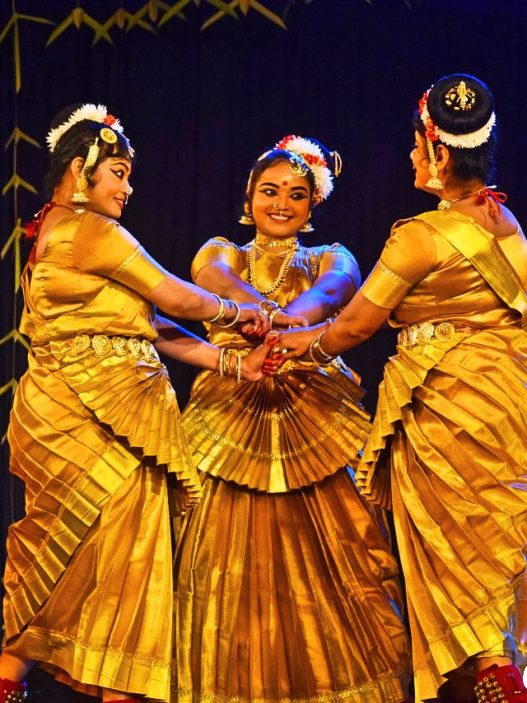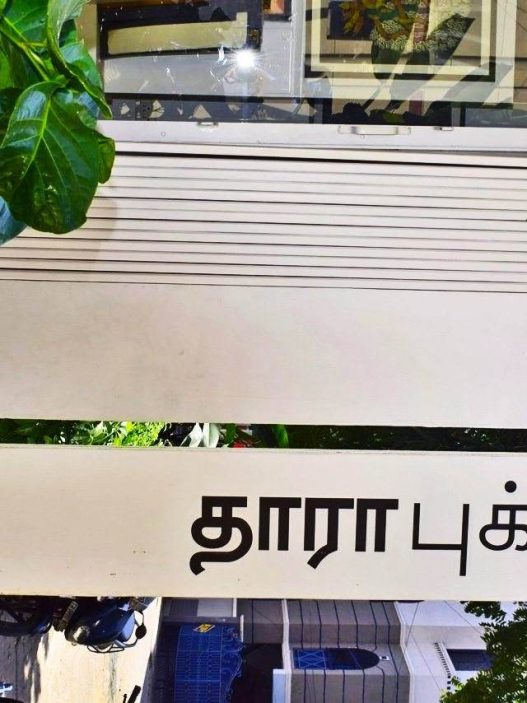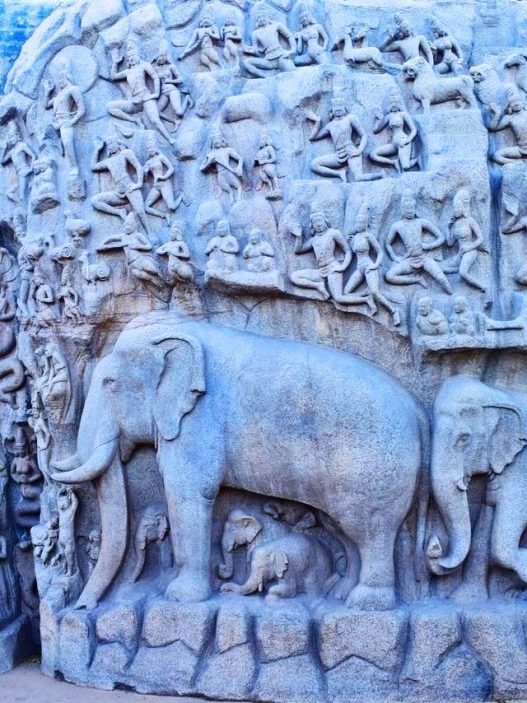Sri Lakshmi Narasimha Swamy Temple / Sri Lakshmi Narasimhar Temple Palayaseevaram, Chengalpattu – Ancient 11th Century Chola Hilltop Narasimha Temple on Padmagiri Hill Where Goddess Lakshmi Sits on Lord Narasimha’s Lap in Shaanthamoorthy Form | Visit, Temple Timings, History, Contact Details, & Complete Travel Guide (Updated)
– where goddess lakshmi’s grace transformed wrath into peace
Sri Lakshmi Narasimhar Temple (ஸ்ரீ லக்ஷ்மி நரசிம்ம சுவாமி கோயில்) in Palayaseevaram beckoned me with its five-tiered Rajagopuram as I traveled along the ancient Kanchipuram Chengalpattu road, drawn by tales of this centuries-old sanctuary perched on a hillock called Padmagiri. As I approached the village, about 6 km from Walajabad, the majestic tower emerged against the skyline, promising a divine encounter.
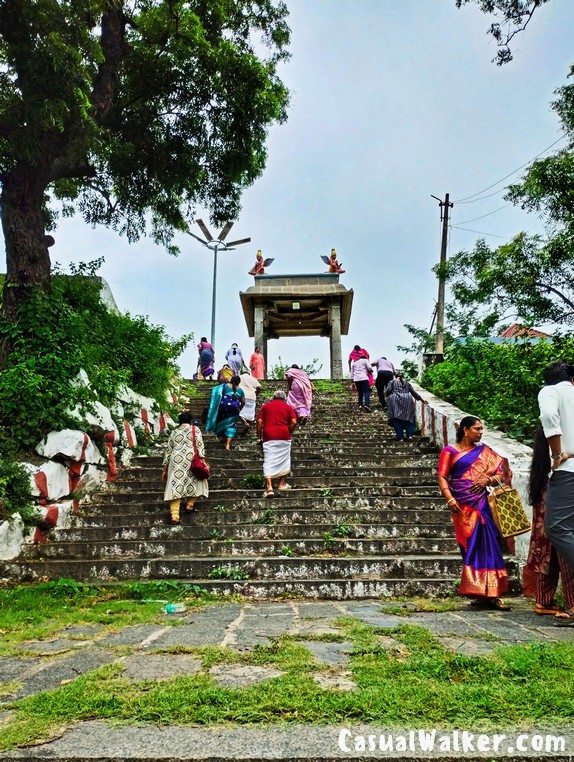
A Temple That Bridges Heaven and Earth
Unlike many hilltop temples that demand arduous climbs, Padmagiri welcomed me with a motorable road winding up its gentle slopes. Within a few hundred meters, the temple revealed itself—not at the summit, but nestled peacefully midway up the hill. The majestic Dwajasthambam and Balipeedam stood proudly in the courtyard, while a magnificent four-pillar mandapam framed my approach, each granite pillar speaking silently of centuries past.
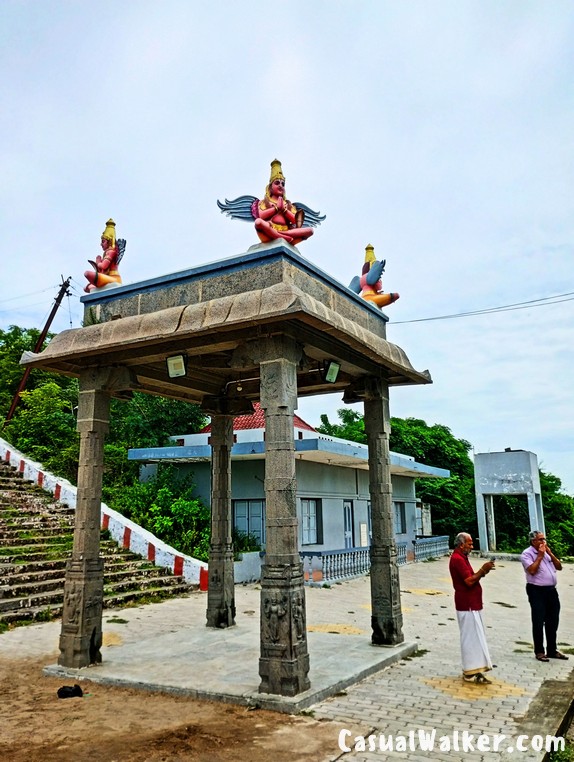
The Divine Darshan
Lord Lakshmi Narasimhar sat before me in serene majesty—His right hand raised in Abhaya mudra (the gesture of fearlessness), His left arm in Alingna hastam (the embracing posture). What moved me most profoundly was seeing Goddess Mahalakshmi seated gracefully on His left lap, Her presence transforming the fierce protector of Bhakta Prahalada into the embodiment of peaceful compassion.
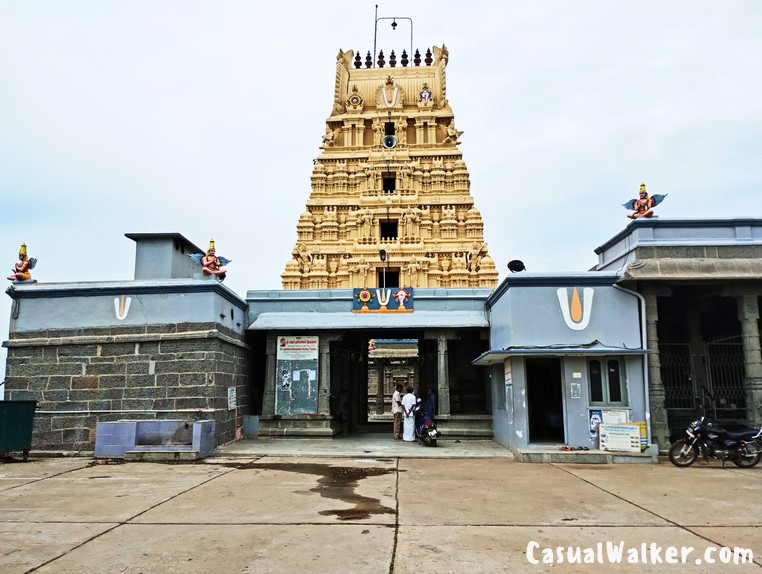
This is no ordinary Narasimhar. After vanquishing the demon Hiranyakasibu, the Lord’s fury was calmed only when Maha Lakshmi sat upon His lap—hence the name Lakshmi Narasimhar, also revered as Shaanthamoorthy – the peaceful form. The sanctum faces west toward Kanchipuram, a unique orientation that adds to the temple’s mystique.
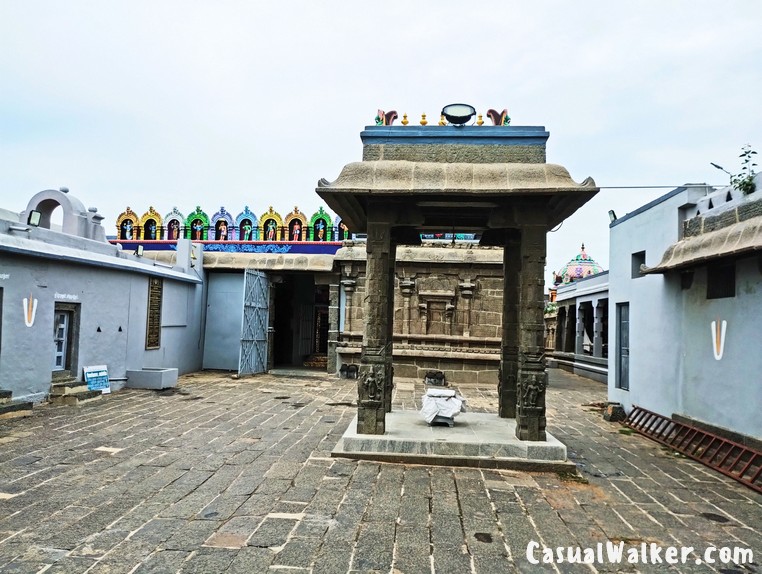
In the ardha mandapam, the Utsava murtis of Sri Maha Vishnu with Sridevi and Bhudevi, along with Maha Lakshmi and Andal, create an atmosphere of complete divine grace. The Garudam here is notably larger than usual, commanding attention with its imposing presence.
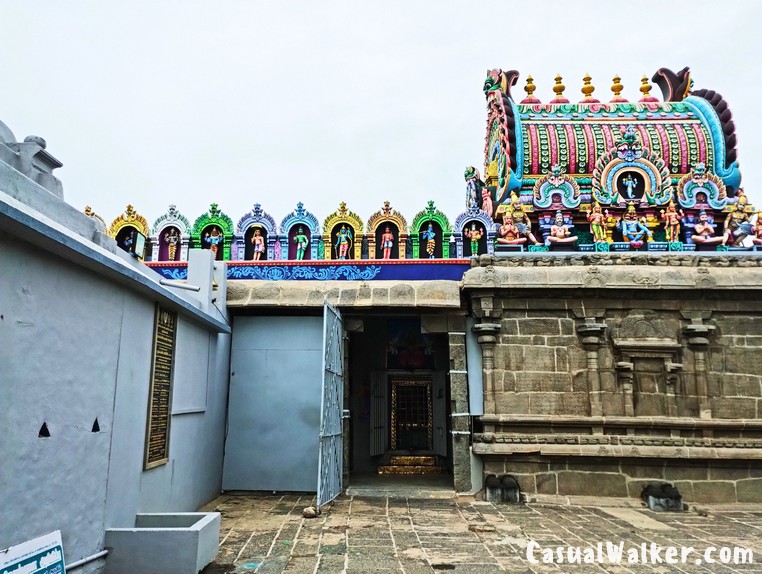
The Gracious Goddess
Goddess Ahobila Valli Thayar presides in Her own separate shrine at the eastern entrance, sitting elegantly with Abhaya Varada hastam—one hand dispelling fear, the other granting boons. Her serene presence sets the tone for every devotee entering this sacred space.
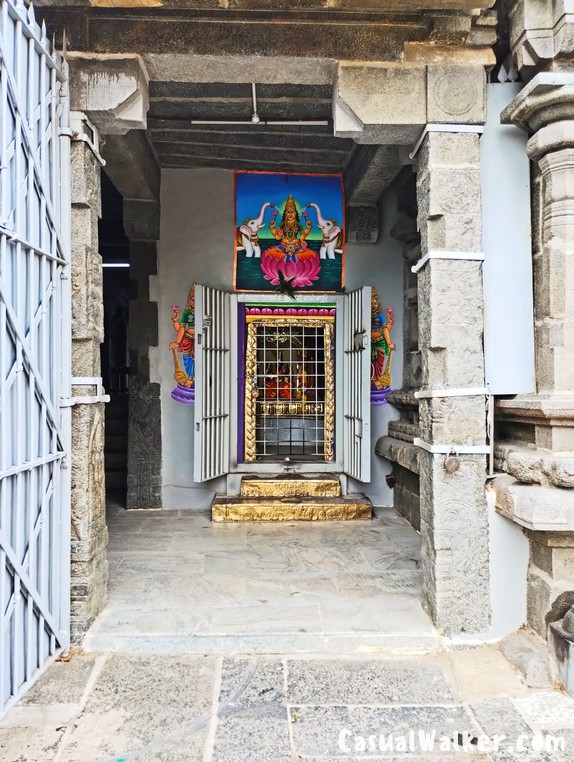
Architectural Splendor
The temple is a masterpiece of Tamil architectural tradition from the Chola period. The sanctum, built on an upanam with intricate kapota bandham and yazhivari work, features stunning Vishnukantha pilasters adorned with square bases, kalasam, kudam, and palakai. The Ananda Vimanam rises magnificently as an ekatala salakara structure topped with five kalasas, its walls decorated with stucco images depicting Maha Vishnu’s Dasavatara and various divine forms on the parapet walls and nasikudus.
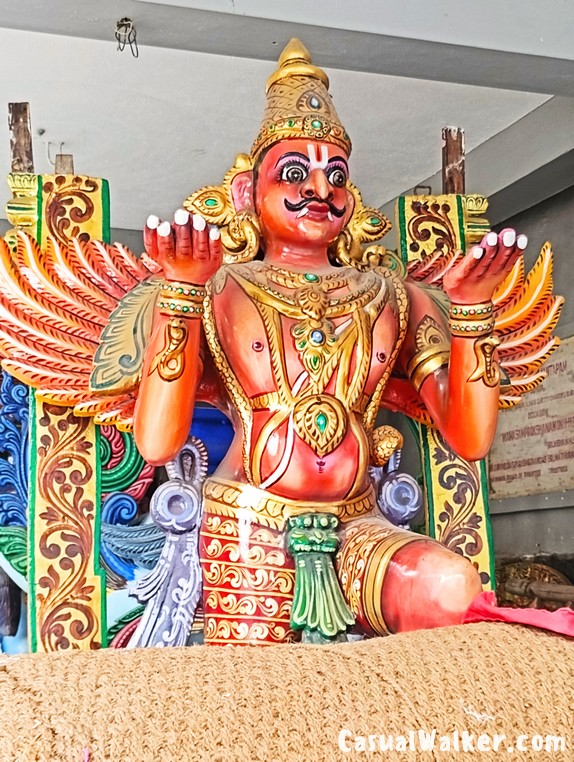
A Thousand Years of History
Standing before these ancient stone walls, I felt the weight of millennia. The temple’s earliest inscription dates to 1080 CE during the reign of Kulothunga Chola I. Back then, this sacred site was called Seeyapuram, and the temple was known as Rajendra Vinnagar, with the deity reverently called Singapiranalwar.
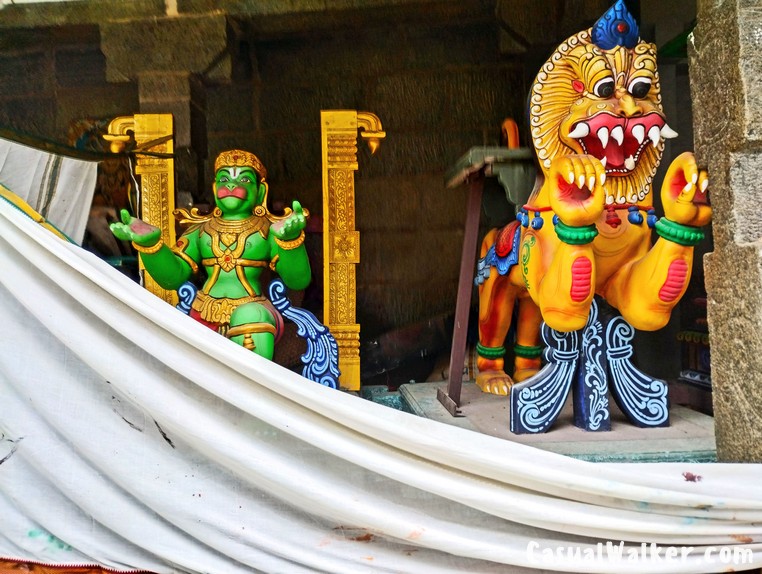
The inscriptions reveal fascinating glimpses into temple life: lands were gifted at Variyambakkam to support the temple, and seven musicians were endowed with land specifically to play during Thirupali (offering time)—a beautiful tradition that continues even today. I was fortunate enough to witness this musical offering during the morning pooja, and the ancient melodies transported me back through centuries.
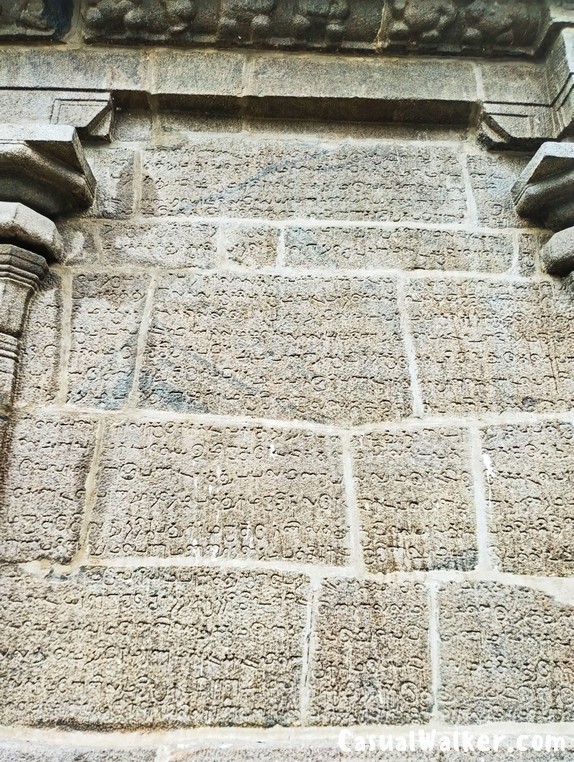
Later inscriptions from 1204 CE record land gifts for conducting the Puratasi Thiruvizha, while a 1729 CE Vijayanagara period inscription refers to the deity as “Jeeyapura Lakshmi Narasimhar.” The temple underwent a grand Maha Samprokshanam on December 2, 2022, breathing fresh life into these ancient walls.
Sacred Geography
What makes this location particularly auspicious is its position on the northern banks of the Palar River, at the confluence of three rivers known as Thirumukkudal or Dakshina Prayag—a meeting point that creates a powerful spiritual energy palpable throughout the temple grounds.
Legends That Live On
The temple priest, Srinivasa Bhattar, shared with me the beautiful legend from the Padmagiri Mahatmiyam in chapter 17 of the Brahmaanda Purana. Vishnu Siddhar, an ardent devotee yearning for Maha Vishnu’s darshan, was guided here by Mareecha Muni. Long before that, Athri Maharishi performed intense penance at this very spot, and Lord Narasimhar agreed to permanently reside on Padmagiri to bless devotees for eternity.
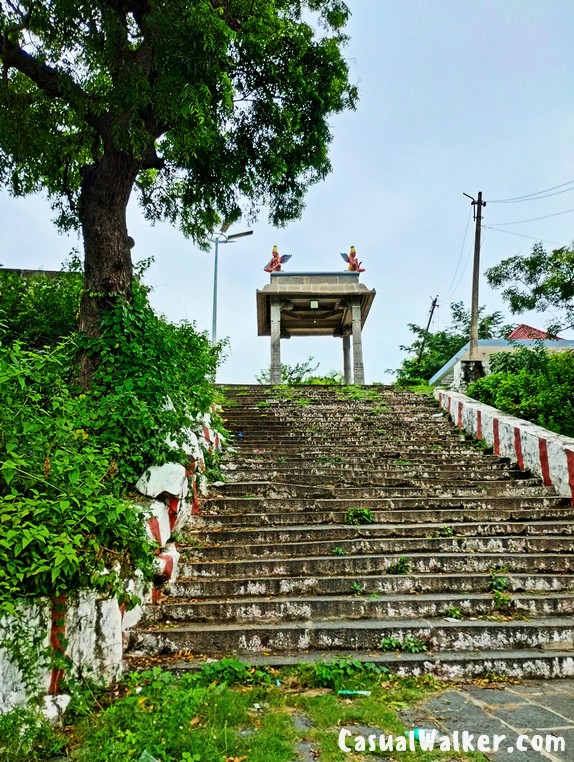
A Living Connection
One tradition particularly touched my heart: every year, the day after Thai Pongal (Maattu Pongal in January), the Utsavar of Kanchipuram’s Varadaraja Perumal visits Palayaseevaram and stays at the hilltop mandapam before participating in the Parivettai Utsavam at Thirumukkoodal. This annual pilgrimage stems from a legend that when Varadaraja Perumal’s Moolavar was damaged during medieval invasions, a murti from Palayaseevaram was taken to Kanchipuram—thus forging an eternal bond between these temples.
The Spiritual Community
In the prakaram, I paid my respects to Visvaksenar, the divine gatekeeper, and to the great Alwars—Nammalvar, Poigai Alwar, Thirupanalwar, and Thirumangai Alwar. Shrines for Ramanujar, Vishnu Siddhar, Andal, and Vedanta Desikar complete this spiritual assembly, each saint seeming to bless the devotees with their eternal presence.
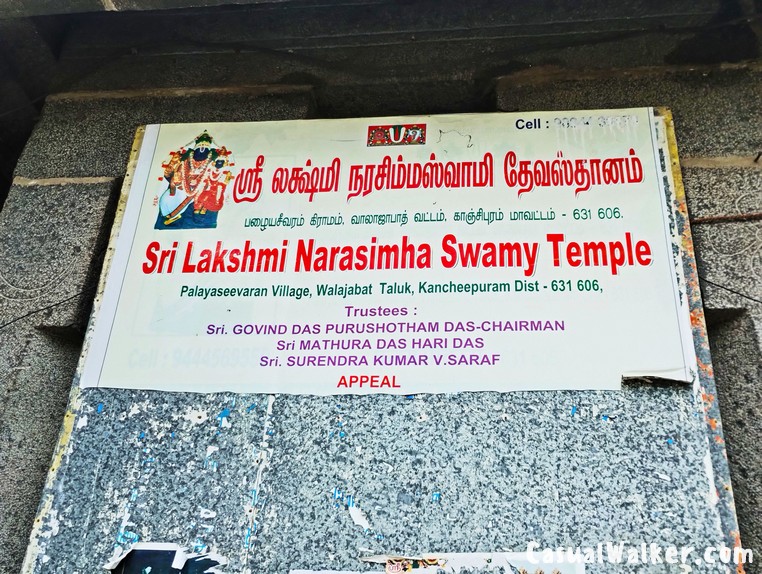
A Gujarati Trust’s Devotion
What amazed me was learning that this ancient Tamil temple has been lovingly maintained by a private Gujarati trust for over 300 years—a beautiful example of how devotion transcends regional boundaries. The current trustees—Sri Govind Das Purushotham Das (Chairman), Sri Mathura Das Hari Das, and Sri Surendra Kumar V. Saraf—have ensured every corner reflects genuine care and reverence.
Festivals and Celebrations
The temple comes alive during Narasimha Jayanthi in Vaikasi (May-June), the grand Brahmotsavam in Aani, Pavitrosavam in Aavani, and the special Varadaraja Perumal visit during Maattu Pongal. These celebrations transform the peaceful hillock into a vibrant celebration of faith.

Travel Tips for Sri Lakshmi Narasimha Swamy Temple, Palayaseevaram, Chengalpattu
Address of Sri Lakshmi Narasimha Swamy Temple, Palayaseevaram, Chengalpattu:
Sri Lakshmi Narasimhar Temple / Sri Laskhmi Narasimha Swamy Temple,
QVC9+C5V, Palayaseevaram (Pazhaiya Seevaram)
Kanchipuram-Chengalpattu Road, Tamil Nadu 631606
Best Time to Visit: Early morning (7:30-9:00 AM) is ideal for peaceful darshan with cooler weather and fewer crowds, while evening visits (4:00-5:30 PM) offer pleasant weather and good lighting for photography; avoid the 11 AM – 4 PM period when the temple is closed.
Temple Timings: 7:30 AM – 11:00 AM and 4:00 PM – 6:30 PM
Contact / Phone Number: +91 94437 18137 (Priest), +91 94445 69550 (Temple Office)
Distances: 6 km from Walajabad, 17 km from Chengalpattu, 21 km from Kanchipuram, 69 km from Chennai Central
How to Visit Sri Lakshmi Narasimha Swamy Temple, Palayaseevaram, Chengalpattu
By Bus: From Chennai, you can board buses to Kanchipuram, Chengalpattu, or Walajabad from CMBT Koyambedu (Route 21A, 21B, 21C; ₹60-80), Tambaram Bus Stand (₹40-60), or Guindy (₹50-70), with the total journey taking 2-3 hours; alternatively, take any bus to Chengalpattu (₹60-80, 1.5-2 hours) and then board a Kanchipuram-bound bus to Palayaseevaram (₹15-20, 30 minutes). From Kanchipuram, buses to Chengalpattu run every 15-20 minutes and reach Palayaseevaram in 40 minutes (₹20-25), while from Chengalpattu, buses toward Kanchipuram or Walajabad depart every 15-20 minutes and take 30-40 minutes (₹15-20). From Tambaram, direct buses to Chengalpattu/Kanchipuram pass through Palayaseevaram and take 1-1.5 hours (₹40-50). Always inform the bus conductor you’re going to “Palayaseevaram Perumal Kovil” or “Lakshmi Narasimhar Temple” so they can alert you at the correct stop, and the temple’s prominent Rajagopuram is visible from the main road.
By Private Taxi or Car Hire: By Car/Self-Drive: From Chennai (65-70 km, 1.5-2 hours), take the GST Road (NH 45) via Guindy, continue through Tambaram, Vandalur, Urapakkam to Chengalpattu, turn right toward Kanchipuram (NH 48), pass through Walajabad after 11 km, and continue 6 km more to Palayaseevaram where the temple is visible on the left side with its prominent Rajagopuram. From Kanchipuram (21 km, 30-40 minutes), head toward Chengalpattu on NH 48, reach Walajabad after 15 km, and continue 6 km to find the temple on your right side. From Chengalpattu (17 km, 25-30 minutes), take Kanchipuram Road (NH 48), cross Walajabad after 11 km, and continue 6 km to see the temple on your left. The road conditions are excellent on NH 48, and there’s a smooth motorable road that goes directly up to the temple doors with adequate free open-air parking available on the hillside, making it convenient for all types of vehicles.
By Taxi/Cab: From Chennai, Ola/Uber charges ₹1,200-1,800 one way while local taxis cost ₹1,500-2,200 (negotiable), with round trips available for ₹2,500-3,500, taking about 1.5-2 hours. From Kanchipuram, Ola/Uber costs ₹400-600, auto-rickshaws charge ₹300-500, and the journey takes 30-40 minutes. From Chengalpattu, Ola/Uber is ₹350-500, auto-rickshaws are ₹250-400, taking 25-30 minutes. From Tambaram, taxis cost ₹800-1,200 for a 1-1.5 hour journey. For better rates, negotiate for round-trip fares including 1-2 hours of waiting time at the temple, which most drivers readily agree to for day trips.
By Train: The nearest railway station is Palaya Seevaram (just 2-3 km from the temple), which has limited local/passenger trains on the Chennai-Villupuram route; from there, an auto-rickshaw costs ₹50-80 for the 10-minute ride to the temple. However, Chengalpattu Junction (17 km away) offers better connectivity with frequent trains from Chennai (₹15-50, 45 minutes to 1 hour), and from Chengalpattu station you can take government buses toward Kanchipuram (₹15-20, 30 minutes), auto-rickshaws (₹200-300), or taxis (₹350-500) to reach the temple. Kanchipuram Railway Station (21 km away) is another option with good connectivity from Chennai and major Tamil Nadu cities, from where you can take buses toward Chengalpattu and get down at Palayaseevaram (₹20-25) or hire a taxi (₹400-600).
By Flight: The nearest airport is Chennai International Airport (MAA), located approximately 65-70 km from the temple. From the airport, you can take a pre-paid taxi for ₹1,800-2,200 or book an Ola/Uber for ₹1,500-2,000, which takes about 2-2.5 hours via the GST Road through Tambaram, Chengalpattu, and Walajabad. Alternatively, you can take the Airport Metro to the Airport Station, board a suburban train to Chengalpattu (₹20-30, 1.5 hours), and then take a local bus or taxi to reach the temple, though this option takes longer but is more economical.




